Dupa plasarea solicitării de comandă, in sectiunea Istoric puteti vedea cate solicitări de comandă mai avem de procesat inaintea dumneavoastra
Program de lucru: Luni - Vineri 8:30 - 17:30, pauza 12:30 - 13:30.
Se efectueaza lucrari de mentenanta la site si pot aparea erori. In cazul in care intampinati erori va rugam sa reincercati mai tarziu.
Ridicarea personala este disponibila pentru comenzile achitate in avans. Se pot ridica dupa ce sunt pregatite.
No products
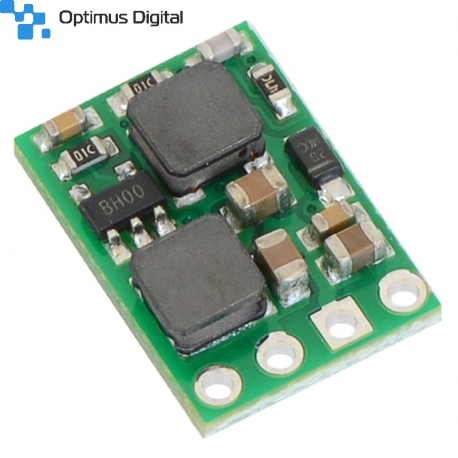 View larger
View larger
Pololu 5V Step-Up/Step-Down Voltage Regulator S10V4F5
0104110000070074
New product
This switching regulator uses the SEPIC topology to produce 5 V from input voltages between 2.5 V and 18 V. The wide input range coupled with its ability to convert both higher and lower input voltages makes it useful for applications where the power supply voltage can vary greatly, as with batteries that start above but discharge below 5 V. The compact (0.4" x 0.575") module can supply over 400 mA in typical applications.
See description for more details about the product.
Add to cart now!
This product is no longer in stock
- Write a review
- Remove this product from my favorite's list.
- Add this product to my list of favorites.
More info
Overview
The Pololu step-up/step-down voltage regulator S10V4F5 is a switching regulator (also called a switched-mode power supply (SMPS) or DC-to-DC converter) with a single-ended primary-inductor converter (SEPIC) topology. It takes an input voltage from 2.5 V to 18 V and increases or decreases the voltage to a fixed 5 V output with a typical efficiency of 70% to 80%.
This flexibility in input voltage is especially well-suited for battery-powered applications in which the battery voltage begins above 5 V and drops below as the battery discharges. Since it lacks the typical restriction that the battery voltage stay above the required voltage throughout its life, new battery packs and form factors can be considered. For instance, a 4-cell battery holder, which might have a 6 V output with fresh alkalines but a 4.8 V nominal voltage with NiMH cells and a 4 V output with partially discharged cells, can now be used for a 5 V circuit. In another typical scenario, a disposable 9 V battery powering a 5 V circuit can be discharged to under 3 V instead of cutting out at 6 V, as with typical linear or step-down regulators.
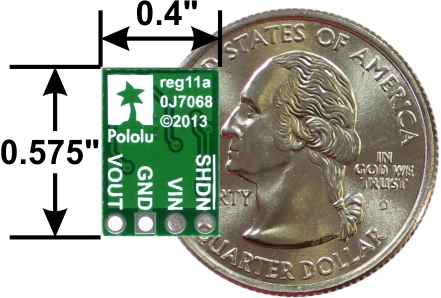
In typical applications, this regulator can deliver over 400 mA continuous; please see the graphs at the bottom of this page for a more detailed characterization. The regulator’s thermal shutdown prevents damage from overheating, but it does not have short-circuit or reverse-voltage protection.
This regulator is also available with a fixed 9 V output or a fixed 12 V output.
Features
• Input voltage: 2.5 V to 18 V (can be higher than, the same as, or lower than the 5 V output)
• Fixed 5 V output with 4% accuracy
• Typical continuous output current: 400 mA (actual continuous output current depends on input voltage; see Typical Efficiency and Output Current section below for details)
• <2 mA typical no-load quiescent current
• Integrated over-temperature shutoff
• Small size: 0.40" x 0.575" x 0.1" (10 mm x 15 mm x 3 mm)
Using the Regulator
During normal operation, this product can get hot enough to burn you. Take care when handling this product or other components connected to it.
Connections
This step-up/step-down regulator has four connections: shutdown (SHDN), input voltage (VIN), ground (GND), and output voltage (VOUT).
The SHDN pin can be driven low (under 0.4 V) to power down the regulator. The quiescent current in this shutdown mode is dominated by the current in the 10 kΩ pull-up resistor from SHDN to VIN. With SHDN held low, this resistor will draw 0.1 mA per volt on VIN (for example, the shutdown current with a 5 V input will be 0.5 mA). This pin should only ever be driven low or left floating; this can be accomplished with a physical switch that toggles it between ground and disconnected, or electrically with something like a transistor controlled by an I/O line.
The input voltage should be between 2.5 V and 18 V. Lower inputs can shut down the voltage regulator; higher inputs can destroy the regulator, so you should ensure that noise on your input is not excessive and be wary of destructive LC spikes (see below for more information).
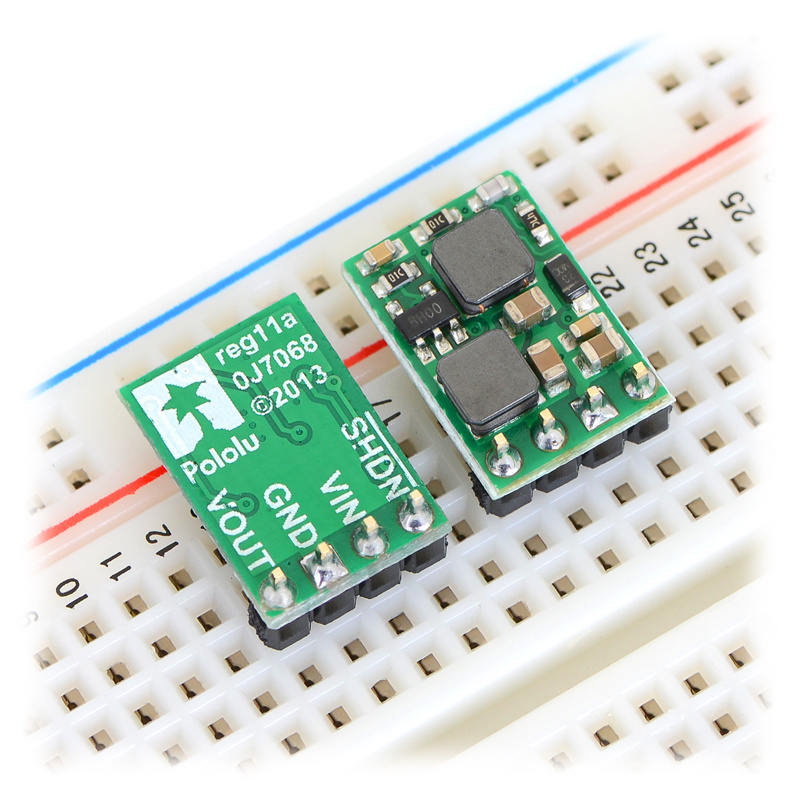
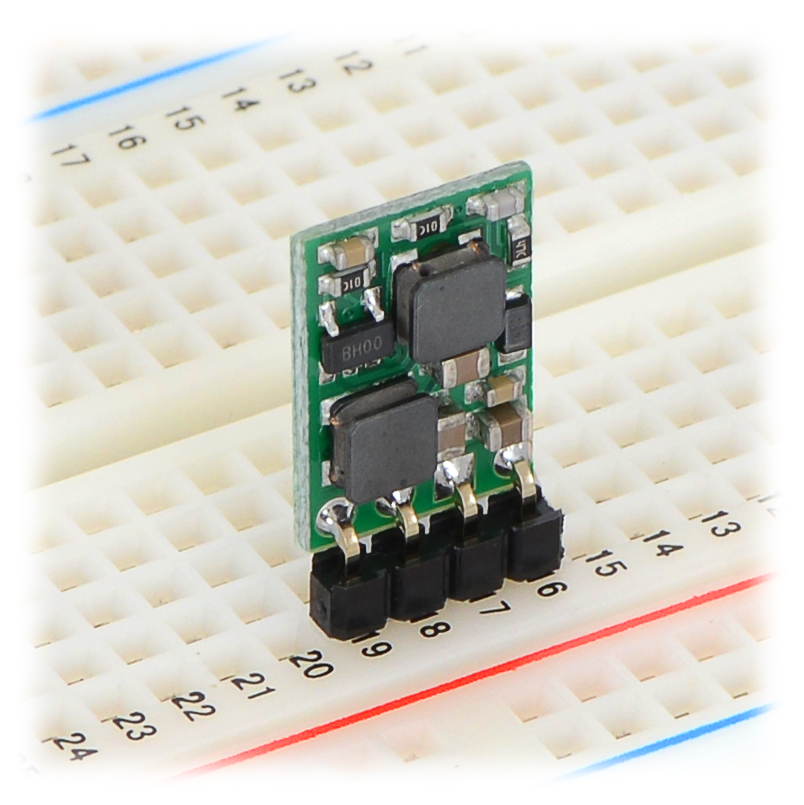
The four connections are labeled on the back side of the PCB, and they are arranged with a 0.1" spacing along the edge of the board for compatibility with standard solderless breadboards and perfboards and connectors that use a 0.1" grid. You can solder wires directly to the board or solder in either the 4x1 straight male header strip or the 4x1 right-angle male header strip.
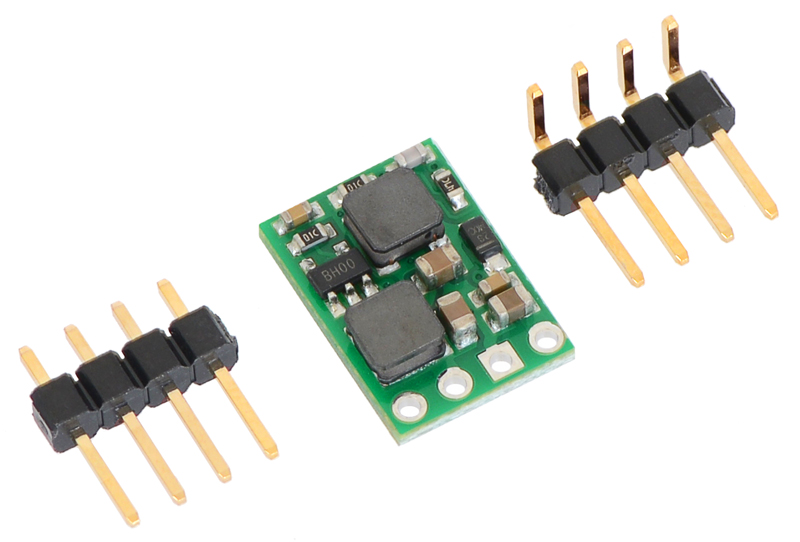
Typical Efficiency and Output Current
The efficiency of a voltage regulator, defined as (Power out)/(Power in), is an important measure of its performance, especially when battery life or heat are concerns. As shown in the graphs below, this switching regulator typically has an efficiency of 70% to 80%.
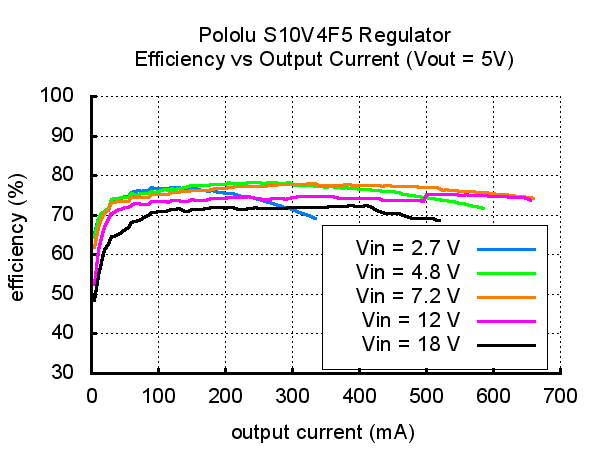

The maximum achievable output current of the board varies with the input voltage but also depends on other factors, including the ambient temperature, air flow, and heat sinking. The graph below shows output currents at which this voltage regulator’s over-temperature protection typically kicks in after a few seconds. These currents represent the limit of the regulator’s capability and cannot be sustained for long periods, so the continuous currents that the regulator can provide are typically lower.
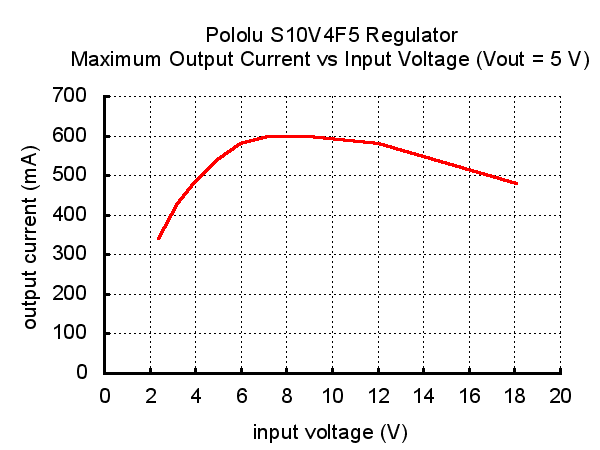
LC Voltage Spikes
When connecting voltage to electronic circuits, the initial rush of current can cause voltage spikes that are much higher than the input voltage. If these spikes exceed the regulator’s maximum voltage, the regulator can be destroyed. In our tests with typical power leads (~30" test clips), input voltages above 11 V caused spikes over 18 V. You can suppress such spikes by soldering a 33 μF or larger electrolytic capacitor close to the regulator between VIN and GND.
More information about LC spikes can be found in our application note, Understanding Destructive LC Voltage Spikes.
Specifications
Dimensions
| Size: | 0.4" x 0.575" x 0.1"1 |
| Weight: | 0.6 g1 |
General specifications
| Minimum operating voltage: | 2.5 V |
| Maximum operating voltage: | 18 V |
| Maximum output current: | 400 mA2 |
| Output voltage: | 5 V |
| Reverse voltage protection?: | N |
| Maximum quiescent current: | 2 mA3 |
Notes:
1 Without included optional headers.
2 Typical maximum that can be delivered continuously without overheating. Actual maximum output current depends on input voltage.
3 While enabled (SHDN floating) with no load. Actual quiescent current depends on input voltage.
Don't delay, buy today.
Add to cart now!
Reviews
Customers who bought this product also bought:
-
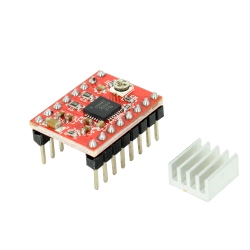
Red A4988...
This is an Arduino compatible break out board...
$1.92
-
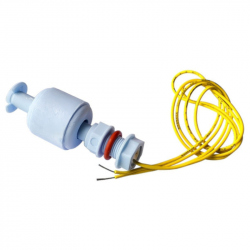
Liquid Level...
Liquid Level Floating Sensor
$4.80
-

Cynel Solder...
Cynel Solder 100 g 1 mm
$10.71
-
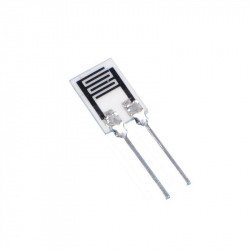
HR202L...
The HR202L is a new type of organic polymer...
$0.96
-
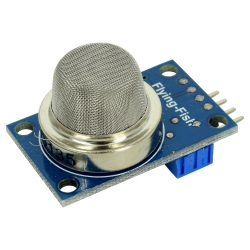
MQ-135 Gas...
The MQ-135 Gas Sensor Mode detects the presence...
$2.88
-
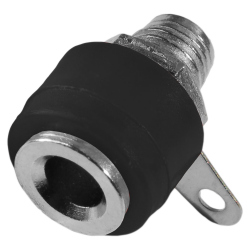
Female...
Female Banana Plug for Panel (Black)
$0.24
-
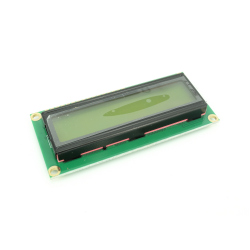
1602 LCD...
1602 LCD with Yellow-Green Backlight 3.3 V
$3.12
-
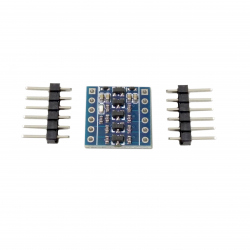
4 Channel...
This 4-channel bi-directional level translator...
$1.08
-
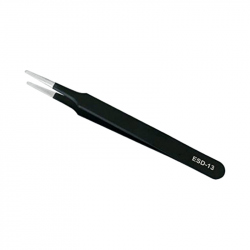
Antistatic...
Antistatic ESD-13 Tweezers See description for...
$1.07
-
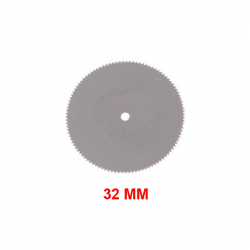
32 mm...
32 mm Stainless Steel Cutting Disc
$0.29








